Hyacinth Flower - Care, Needs and Practical Gardening Tips
Hyacinth is one of the most popular bulb plants, grown not only in gardens, but also in pots. Varieties grown in containers and indoors deserve a special mention. They bloom the longest and allow you to enjoy their magnificent looks. Are you wondering how to take care of such plants and what kind of soil they need? Check everything you should know about hyacinths.
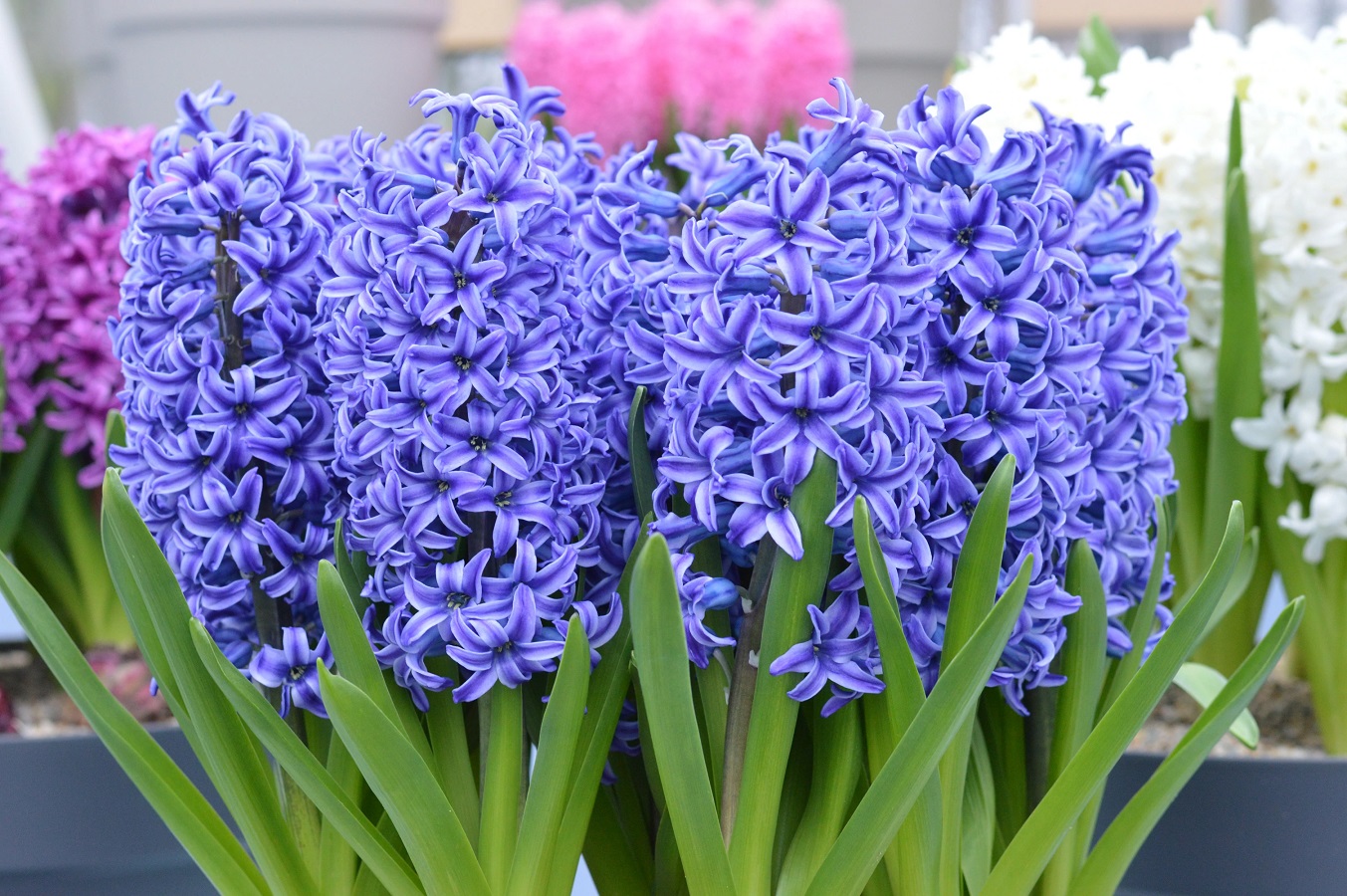
Hyacinth – what kind of plant is it?
Hyacinth (Hyacinthus) is a plant included in the group of bulbs. It originates in the Mediterranean Sea region. It can also be encountered in southwestern Asia, where the plants grow naturally. Hyacinths can be grown both in flower beds and indoors – it’s their characteristic feature and a great advantage.
A potted hyacinth is a popular way to grow this flower – especially when one lives in an apartment and wants to add some freshness to an interior.
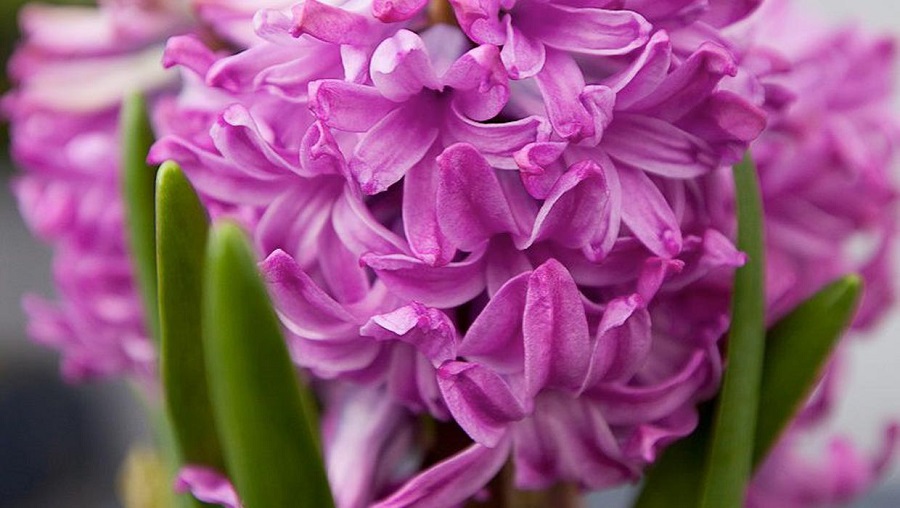
Hyacinth flowers – colors and most popular varieties
Hyacinths belong to the asparagaceae plant family. Eastern hyacinth is the most common type which has characteristic blue flowers blossoming in spring. This variety is the precursor of the subsequent types. Currently, there are over 100 different hyacinth varieties, but only about 25 are popular among gardeners. A great majority of the plants offered on the market grow from 20 to 30 centimeters tall.
The most popular types of hyacinths picked by gardeners include plants such as:
- white hyacinth – Carnegie, L’Innocence and White Pearl,
- yellow hyacinth – City of Haarlem,
- pink hyacinth – Pink Pearl, Splendid Cornelia, Anna Marie, Fondant,
- blue hyacinth – General Köhler, Concord or Blue Jacket,
- red hyacinth – Jan Bos.
It’s worth mentioning that there’s also a special variety of this plant – miniature hyacinth. It grows maximally 10 centimeters tall.
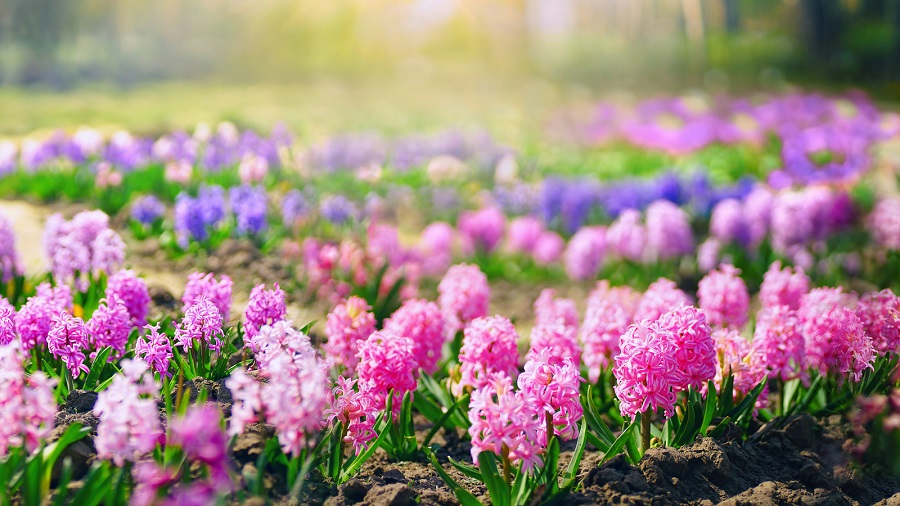
Hyacinth flower – what is the best spot for this plant?
If you decide to plant hyacinth bulbs – whether in the garden or in containers – you have to take care of the place where they are going to grow. A spot with lots of sunlight and warmth is a good choice. The plant can also grow in a soft shadow. Remember that hyacinths growing outdoors need protection from drafts and strong wind blows.
Planting a hyacinth in full sun is a guarantee of rich blossoming and thick clusters of flowers. Shaded spots aren’t as perfect. The plant might look stretched – in search of sunlight – and the flowers will be thinner.
The soil for hyacinth bulbs should be fertile and rich in humus. Make sure it’s permeable – the pH of the soil in which the bulbs are going to grow should be as neutral as possible.
You can prepare the soil for your hyacinths using various mixes, or purchase a hyacinth mix in a gardening store. Before you plant the bulbs, make sure to weed the spot and remove any plants that could hinder the hyacinth’s growth. You can also enrich the soil using compost.
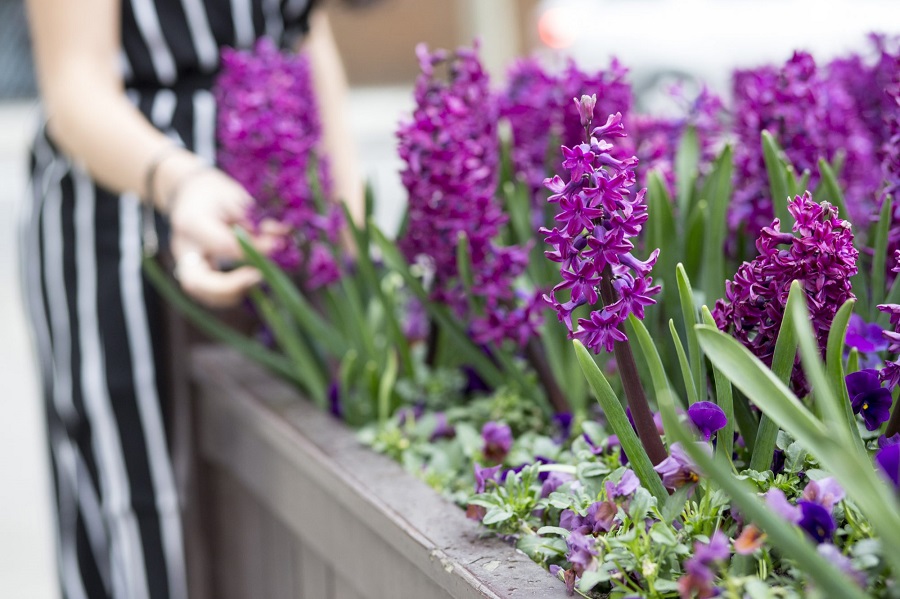
Hyacinth plant care – how to water and fertilize hyacinths?
Hyacinths don’t like moist soil. But it doesn’t mean you can simply neglect watering the plant. Make sure to remember about watering, especially when the plant grows and blooms in spring, when the precipitation is low and the ground is very dry as a result. In this case, the plant needs to be watered even daily. Hyacinths grown in pots require less frequent watering.
Fertilizing hyacinths is a significant process. Begin it as soon as planting the bulbs – you can enrich the spot using compost. In spring, when the hyacinth begins its growth, it’s recommended to add some nitrogen fertilizer. As the plant blooms, use multi-ingredient fertilizers. Each of the mentioned products can be found in physical or online gardening stores.
Hyacinth propagation – is it easy?
A potted hyacinth, as well as varieties planted outdoors can prove to be quite difficult to propagate for an inexperienced gardener. Around the main bulb, small side bulbs appear. Propagating a hyacinth involves separating them delicately from the mother bulb, while being careful not to damage any of them. Fresh young bulbs have to placed in a dark and cold place – and planted in a container or a flower bed in spring.
You can wear latex gloves during the process – the plant produces juice which might cause skin irritation.
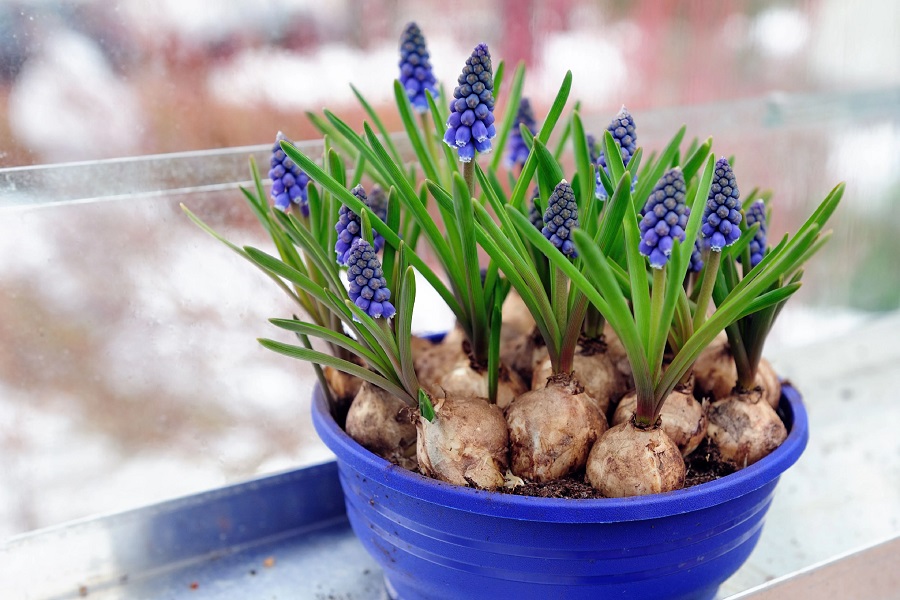
Do hyacinths need trimming?
A hyacinth doesn’t have to be trimmed after blooming. It’s a bulb plant, so you should allow the upper part to dry completely after blossoming. This process is important, because the plant gathers required nutrients even after blooming, transporting them directly into the bulb. This way, it can grow again when the next season comes. You can remove the upper part after it gets completely dry.
The most common diseases and pests of hyacinths
Hyacinths, just like other houseplants and plants grown outdoors, are prone to various dangerous diseases and pests. Fusarium wilt is the most common disease affecting these plants. It attacks mostly the bulbs – white residue appears on the bulb layers which begin to rot as the disease progresses. The only prevention method against the disease caused by fungi is taking a good care of the bulbs – and fortifying them with a special product.
Another common disease of hyacinths is called grey mold, appearing as raised stains on the bulbs. As the disease progresses, they turn dark brown and begin to rot.
Stem nematode is the most popular pest destroying hyacinths. It marks its presence by causing various parts of the plant to die. To get rid of this pest, you should remove the dry leaves and burn them. Additionally, use an appropriate product to kill off the worm.
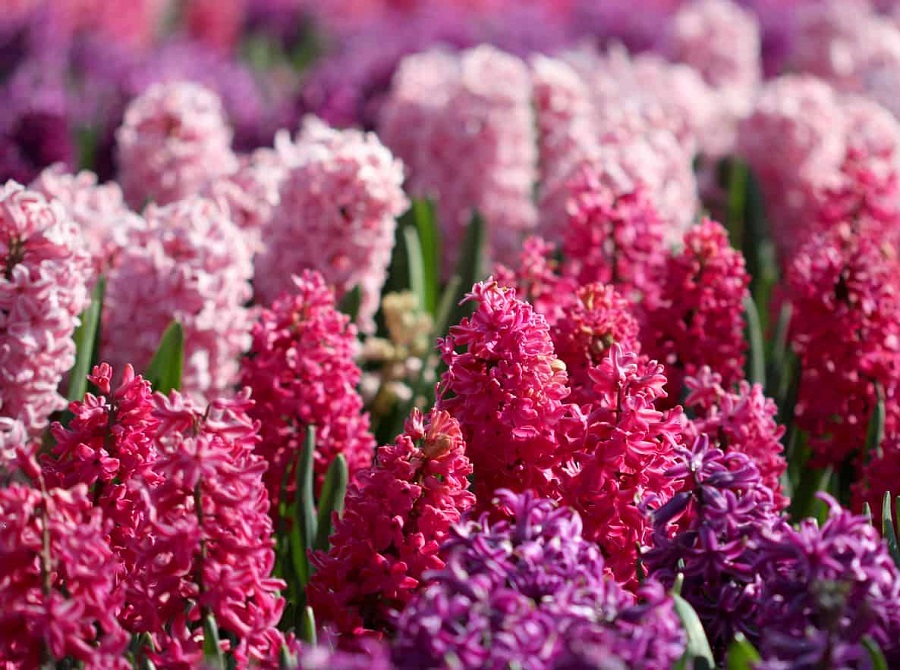
📍 When to plant hyacinth bulbs?
The period between August and September is the best time for planting hyacinth bulbs. Before putting the bulbs in the soil, they should be stored in a shaded or completely dark place.
📍 When do hyacinths bloom?
Are you wondering when and how many times do hyacinths bloom? Note that the plant is going to adorn the flower bed for a long time. Hyacinths develop flowers at the beginning of April and display beautiful flowers until the end of May.
📍 How long do hyacinths bloom?
Hyacinths are plants that bloom for a very long time. They start blooming in spring and adorn the garden for two months. The blooming period of hyacinths lasts from April to May.
📍 What to do after a hyacinth stops blooming?
A potted hyacinth, as well as the one planted outdoors should be left until the green part completely dries after blooming. As long as the leaves are green, they transmit precious nutrients to the bulb, which gathers strength before blooming again next year.
Featured articles




